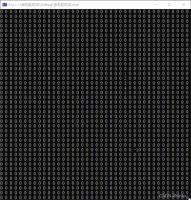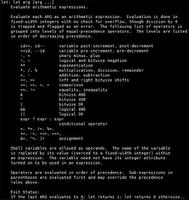简单粗暴的使用lxml从网页HTML/XML中提取数据

Python 的 lxml 模块是一个非常好用且性能高的HTML、XML解析工具,通过它解析网页,爬虫就可以轻松的从网页中提取想要的数据。lxml是基于C语言的libxml2和libxslt库开发的,所以速度是相当的快。
使用lxml提取网页数据的流程
要从网页里面提取数据,使用lxml需要两步:
第一步,用lxml把网页(或xml)解析成一个DOM树。这个过程,我们可以选择etree、etree.HTML 和 lxml.html 这三种来实现,它们基本类似但又有些许差别,后面我们会详细讲到。
第二步,使用xpath遍历这棵DOM 树,找到你想要的数据所在的节点并提取。这一步要求我们对xpath规则比较熟练,xpath规则很多,但别怕,我来总结一些常用的套路。
生成DOM树
上面我们说了,可以有三种方法来把网页解析成DOM树,有选择困难症的同学要犯难了,选择那种好呢?别急,我们逐一探究一下。下面我通过实例来解析一下下面这段html代码:
<div class="1"><p class="p_1 item">item_1</p>
<p class="p_2 item">item_2</p>
</div>
<div class="2">
<p id="p3"><a href="/go-p3">item_3</a></p>
</div>
使用etree.fromstring()函数
先看看这个函数的说明(docstring):
In [3]: etree.fromstring?Signature: etree.fromstring(text, parser=None, *, base_url=None)
Call signature: etree.fromstring(*args, **kwargs)
Type: cython_function_or_method
String form: <cyfunction fromstring at 0x7fe538822df0>
Docstring:
fromstring(text, parser=None, base_url=None)
Parses an XML document or fragment from a string. Returns the
root node (or the result returned by a parser target).
To override the default parser with a different parser you can pass it to
the ``parser`` keyword argument.
The ``base_url`` keyword argument allows to set the original base URL of
the document to support relative Paths when looking up external entities
(DTD, XInclude, ...).
这个函数就是把输入的html解析成一棵DOM树,并返回根节点。它对输入的字符串text有什么要求吗?首先,必须是合法的html字符串,然后我们看看下面的例子:
In [19]: html = '''...: <div class="1">
...: <p class="p_1 item">item_1</p>
...: <p class="p_2 item">item_2</p>
...: </div>
...: <div class="2">
...: <p id="p3"><a href="/go-p3">item_3</a></p>
...: </div>
...: '''
In [20]: etree.fromstring(html)
Traceback (most recent call last):
File "/home/veelion/.virtualenvs/py3.6/lib/python3.6/site-packages/IPython/core/interactiveshell.py",
line 3267, in run_code
exec(code_obj, self.user_global_ns, self.user_ns)
File "<ipython-input-20-aea2e2c2317e>", line 1, in <module>
etree.fromstring(html)
File "src/lxml/etree.pyx", line 3213, in lxml.etree.fromstring
File "src/lxml/parser.pxi", line 1877, in lxml.etree._parseMemoryDocument
File "src/lxml/parser.pxi", line 1758, in lxml.etree._parseDoc
File "src/lxml/parser.pxi", line 1068, in lxml.etree._BaseParser._parseUnicodeDoc
File "src/lxml/parser.pxi", line 601, in lxml.etree._ParserContext._handleParseResultDoc
File "src/lxml/parser.pxi", line 711, in lxml.etree._handleParseResult
File "src/lxml/parser.pxi", line 640, in lxml.etree._raiseParseError
File "<string>", line 6
XMLSyntaxError: Extra content at the end of the document, line 6, column 1
竟然报错了!究其原因,我们的html是两个并列的<div>标签,没有一个单独的root节点。那么给这个html再加一个最外层的<div>标签呢?
In [22]: etree.fromstring('<div>' + html + '</div>')Out[22]: <Element div at 0x7fe53aa978c8>
这样就可以了,返回了root节点,它是一个Element对象,tag是div。
总结一下,etree.fromstring()需要最外层是一个单独的节点,否则会出错。这个方法也适用于生成 XML 的DOM树。
使用etree.HTML()函数
这个函数更像是针对 HTML 的,看看它的docstring:
In [23]: etree.HTML?Signature: etree.HTML(text, parser=None, *, base_url=None)
Call signature: etree.HTML(*args, **kwargs)
Type: cython_function_or_method
String form: <cyfunction HTML at 0x7fe538822c80>
Docstring:
HTML(text, parser=None, base_url=None)
Parses an HTML document from a string constant. Returns the root
node (or the result returned by a parser target). This function
can be used to embed "HTML literals" in Python code.
To override the parser with a different ``HTMLParser`` you can pass it to
the ``parser`` keyword argument.
The ``base_url`` keyword argument allows to set the original base URL of
the document to support relative Paths when looking up external entities
(DTD, XInclude, ...).
接口参数跟etree.fromstring()一模一样,实操一下:
In [24]: etree.HTML(html)Out[24]: <Element html at 0x7fe53ab03748>
输入两个并列节点的html也没有问题。等等,返回的root节点对象Element的标签是html?把它用etree.tostring()还原成html代码看看:
In [26]: print(etree.tostring(etree.HTML(html)).decode())<html><body><div class="1">
<p class="p_1 item">item_1</p>
<p class="p_2 item">item_2</p>
</div>
<div class="2">
<p id="p3"><a href="/go-p3">item_3</a></p>
</div>
</body></html>
In [27]: print(html)
<div class="1">
<p class="p_1 item">item_1</p>
<p class="p_2 item">item_2</p>
</div>
<div class="2">
<p id="p3"><a href="/go-p3">item_3</a></p>
</div>
也就是说,etree.HTML()函数会补全html代码片段,给它们加上<html>和<body>标签。
使用lxml.html函数
lxml.html是lxml的子模块,它是对etree的封装,更适合解析html网页。用这个子模块生成DOM树的方法有多个:lxml.html.document_fromstring()
lxml.html.fragment_fromstring()
lxml.html.fragments_fromstring()
lxml.html.fromstring()
它们的docstring可以在ipython里面查一下,这里就不再列举。通常,我们解析网页用最后一个fromstring()即可。这个fromstring()函数也会给我们的样例html代码最顶层的两个并列节点加一个父节点div。
上面三种方法介绍完,相信你自己已经有了选择,那必须是lxml.html。
因为它针对html做了封装,所以也多了写特有的方法:
比如我们要获得某个节点下包含所有子节点的文本内容时,通过etree得到的节点没办法,它的每个节点有个text属性只是该节点的,不包括子节点,必须要自己遍历获得子节点的文本。而lxml.html有一个text_content()方法可以方便的获取某节点内包含的所有文本。
再比如,好多网页的链接写的都是相对路径而不是完整url:<a href="/index.html">,我们提取链接后还要自己手动拼接成完整的url。这个时候可以用lxml.html提供的make_links_absolute()方法,这个方法是节点对象Element的方法,etree的Element对象却没有。
使用xpath提取数据
我们还以下面这段html代码为例,来看看如何定位节点提取数据。
<div class="1"><p class="p_1 item">item_1</p>
<p class="p_2 item">item_2</p>
</div>
<div class="2">
<p id="p3"><a href="/go-p3">item_3</a></p>
</div>
首先导入lxml.html模块,生成DOM树:
In [50]: import lxml.html as lhIn [51]: doc = lh.fromstring(html)
(1)通过标签属性定位节点
比如我们要获取<div class="2">这节点:
In [52]: doc.xpath('//div[@class="2"]')Out[52]: [<Element div at 0x7fe53a492ea8>]
In [53]: print(lh.tostring(doc.xpath('//div[@class="2"]')[0]).decode())
<div class="2">
<p id="p3"><a href="/go-p3">item_3</a></p>
</div>
(2)contains语法
html中有两个<p>标签的class含有item,如果我们要提取这两个<p>标签,则:
In [54]: doc.xpath('//p[contains(@class, "item")]')Out[54]: [<Element p at 0x7fe53a6a3ea8>, <Element p at 0x7fe53a6a3048>]
## 获取<p>的文本:
In [55]: doc.xpath('//p[contains(@class, "item")]/text()')
Out[55]: ['item_1', 'item_2']
(3)starts-with语法
跟(2)一样的提取需求,两个<p>标签的class都是以p_开头的,所以:
In [60]: doc.xpath('//p[starts-with(@class, "p_")]')Out[60]: [<Element p at 0x7fe53a6a3ea8>, <Element p at 0x7fe53a6a3048>]
## 获取<p>的文本:
In [61]: doc.xpath('//p[starts-with(@class, "p_")]/text()')
Out[61]: ['item_1', 'item_2']
(4)获取某一属性的值
比如,我们想提取网页中所有的链接:
In [63]: doc.xpath('//@href')Out[63]: ['/go-p3']
以上是 简单粗暴的使用lxml从网页HTML/XML中提取数据 的全部内容, 来源链接: utcz.com/z/520906.html







